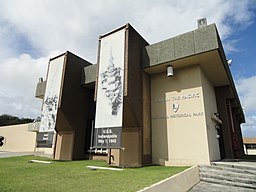A Day at the Museum

A Day at the Museum
- Status: Past Project
- Possible Hours: 31
- Categories: Military and Veterans, Education and Literacy, Citizenship and Civic Engagement, History and Culture
- Schools: Southern High School
- Project Start Date: 10/13/2017
- Project End Date: 12/15/2017
Students will have in-class lessons on doing research, writing a research paper, theatre skills, and monologue writing. Students will audition to be actors for the public performances using their own monologues. They will either be chosen to be the actors, or crew of some kind. Crew positions are: Musicians (learn and perform music of the era), Costumes (assist in creating costumes for actors), Prop Masters (assist in finding appropriate props), Sets (assist in creating appropriate set pieces), Art (create artwork such as a poster to publicize project) Photography (assist in documenting the project in photographs), Publicity (assist in publicizing the performances by posting flyers at school or in the community and via social media), Programs (assist in creating a performance booklet or program), or Ushers (welcome attendees and thank them for coming at the end.)
Actors will need to memorize their monologues, learn acting techniques, and perform their roles in public. The actors can earn 32 hours of service learning (15 preparation/16 action hours/1 hour of reflection). All other positions vary in the number of hours they can earn. One hour is given for completion of the reflection.
In order to earn service learning hours, a reflection is required. Use this as a guideline for your reflecition: What did you do? What did you learn? How was this an example of service? Why was the Day at the Museum Project important for the Guam community? How did you feel about your participation?
Many standards to be addressed including (but not limited to):
Language Arts:
Research to Build and Present Knowledge
CCSS.ELA-LITERACY.W.9-10.7
Conduct short as well as more sustained research projects to answer a question (including a self-generated question) or solve a problem; narrow or broaden the inquiry when appropriate; synthesize multiple sources on the subject, demonstrating their understanding of the subject under investigation.
CCSS.ELA-LITERACY.W.9-10.8
Gather relevant information from multiple authoritative print and digital sources, using advanced searches effectively; assess the usefulness of each source in answering the research question; integrate information into the text selectively to maintain the flow of ideas, avoiding plagiarism and following a standard format for citation.
CCSS.ELA-LITERACY.W.9-10.9
Draw evidence from literary or informational texts to support analysis, reflection, and research.
Social Studies:
HS Guam History
Standard 2: History
Students learn how human beings view themselves in and over time.
GH.2.1 Examine and interpret primary and secondary source documents.
GH.2.2 Use concepts, such as time, chronology, causality, change, conflict, and complexity, to explain connections and
patterns of historical change and continuity.
GH.2.3
Identify and describe historical periods and patterns of change during the eras of Guam history, including the
following:
• Japanese Occupation
Fine Arts:
Standard 2: Creating (Proficient)
Students will engage in the artistic process, acquire skills, and use them to communicate meaning in an original work of art.
HSP.2.1 Make acting choices using script analysis, character research, reflection, through the rehearsal process
HSP.2.2 Write dialogues and scenes, applying basic dramatic structure: exposition, complication, conflict, crises, climax, and resolution.
HSP.2.3 Design, produce, or perform scenes or plays from a variety of theatrical periods and styles, including Shakespearean and contemporary realism.
Acknowledged by Teacher/Guidance Counselor:
Print name: _____________________________
Signature:_______________________________
Date:______________________









